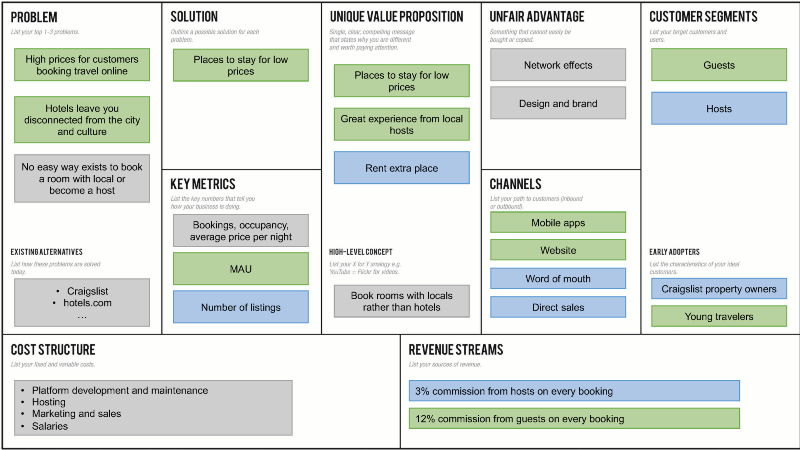As much as the Shark Tank has inspired people to become entrepreneurs, the show perpetuates the myth that investors are looking for ideas. Investors are looking for businesses.
A good half hour of working out a lean canvas is what you need to make sure your startup idea is a potential business and not just a great product.
The difference between a product and business
I’m often surprised when I talk to would be founders that many of them don’t seem to really grasp the key difference between a product and business.
First, look at meta problems and find a solution. That’s your product. Your business is finding a product that people will pay for. Crucially, they need to pay more than the solution to the original problem costs.
Investors are looking for businesses that show growth potential. A brilliant product that’s not a business is going to have an uphill battle. You might win the lottery and get bought out — WhatsApp and Trello come to mind, although this is a one in a million moonshot.
Having a killer feature for your product is no saving grace. SnapChat was doing great with automatically disappearing social media posts. Then Instagram released pretty much the same thing.
That’s why features and a cool product aren’t enough for your startup. By themselves, they won’t get you the VC rocket fuel you need to blast off.
Making a lean canvas
Lean Canvas is a really cool tool for making a quick business plan — something to do long before building an MVP.
When you pitch an idea, what matters most is to show the health of your startup's business model.
I made a Lean Canvas using AirBnB as an example, you can download it here so it makes sense when I walk through it. A little trick that helps is to color code it, each potential stakeholder gets their own color (here guest get green, hosts blue).

Starting off is straightforward: the problem and the solution. With AirBnB the problem is expensive hotels that prevent you from getting an authentic local experience. The solution is locals offering places to stay.
Key metrics help you hone in on what’s important rather than drowning in a sea of irrelevant data. Think about what matters most to show the health of your startup in terms of a business. This might not always be the obvious metrics like monthly active users [MAU]. For our example I’m using bookings, occupancy, average price per night as well as MAU.
The next part is important and will form the core of your eventual pitch. What’s your unique value proposition? What do you offer that other existing solutions don’t? For the high level description you can use 500 Startups’ elevator pitch formula:
We solve [problem] by providing[advantage], to help [target] accomplish [target’s goal].
Next in line, what advantages can you use. Then take a look at your market segment, who will be your early adopters and what channels you plan to reach them over. The last section is the more traditional part of how you plan to make money and what your costs are going to be.
If you have any gaping holes in your lean canvas, you don’t have a startup. You might have a great idea for a product, but getting funding is going to be exceedingly difficult.

A capitalist five year plan
I understand that you don’t have a crystal ball and asking you to make a five year cash flow projection isn’t easy. Nonetheless, investors aren’t going to take you seriously if you’re looking for VC money without a plan.
Continuing with my example of AirBnB, here’s a spreadsheet of a cash flow plan that I made.
Don’t be disheartened if you’re in the red at first. Investors are looking for hockey stick growth: high expenses while you build and then a rapid spike in revenue once you’ve captured market share. That’s why it’s crucial to have a plan with an incident response section in place that shows you’re ready for this.
Creating your proof of concept
It’s definitely possible to build a simple MVP for 15k or less. This doesn’t have to have every feature you can imagine, but you can use your MVP as a starting point to test the assumptions in your lean canvas.
The killer pitch deck
Now that you have a lean canvas, a project cash flow plan, a working MVP that is already collecting data that validates your original idea, you’re ready to turn to investors. Without VC money, it’s going to be tricky to have enough capital to survive the first few years while paying for development and marketing.
When you turn to investors such as AngelList, 500 Startups or Y Combinator, imagine the difference between presenting an idea that sounds good versus a working business with a clear plan. That’s the difference between being a data driven startup and having a great idea.
Each section of your lean canvas can be a slide in your eventual killer pitch deck. Rather than ideas and assumptions, you’re working with real-world data and a viable business model. Stay tuned for part two: the pros and cons of different funding options for startups.
Originally featured on StartupGrind.








